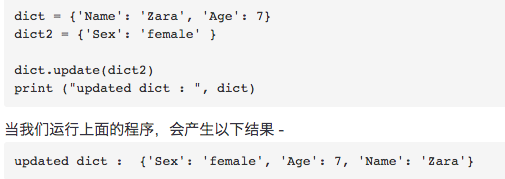琐碎
warning ignore
12import warningswarnings.filterwarnings("ignore")中文注释乱码
1# -*- coding:utf8 -*-放在python脚本的第一行。
- 1234a = np.array([1,2,3,...]) # nb = np.array([2,3,4,...]) # mc = a - b # error because n != mc = a.reshape(n,1)-b # produce a two-dim array (n,m)
Number
数据类型
Python支持不同的数字类型 -
int (有符号整数): 它们通常被称为只是整数或整数,是正的或负的整数,没有小数点。 Python3整数是无限的大小。Python 2中有两个整数类型 - int 和 long。
在Python3中不再有 “长整型”了。
float (点实数值) : 也叫浮点数,它们代表实数,并用小数点分割整数和小数部分。浮点数也可以用科学记数法,使用 e 或 E 表示10的幂 (2.5e2 = 2.5 x 102 = 250).
complex (复数) : 格式是 a + bJ,其中a和b是浮点数,而J(或j)代表-1的平方根(这是一个虚数)。 实数是a的一部分,而虚部为b。复数不经常使用在 Python 编程了。
数值类型转换
- 类型 int(X)是将x转换为纯整数
- 类型 long(x) 将 x 转换为一个长整型
- 类型 float(x) 将 x 转换为浮点数
- 类型 complex(x) 将 x 转换成具有实数部分x和虚部为零的复数
- 类型 complex(x, y) x和y转换成一个带x实部和y为虚部的复数。x和y是数值表达式
数值函数

随机函数
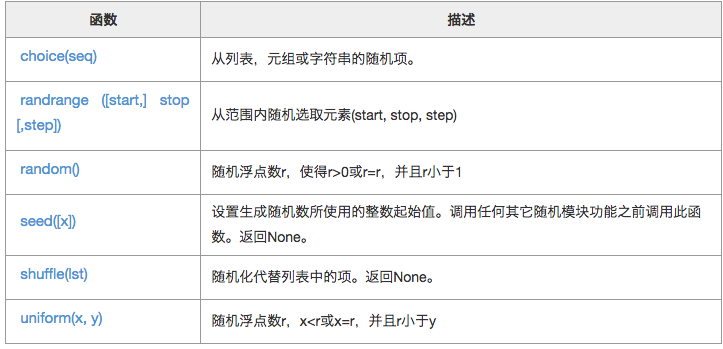
random.choice()
以下是 choice() 方法的语法:
|
|
|
|
random.randrange()
randrange()方法的语法:
|
|
- start — 范围的开始点。这个起点包括在该范围内。默认值为0
- stop — 停止的范围点。这个点不包含在这个范围内
- step — 递增值。默认值为1
random.random()
返回范围[0,1]内的随机值
random.shuffle()
|
|
|
|
random.unform()
|
|
三角函数
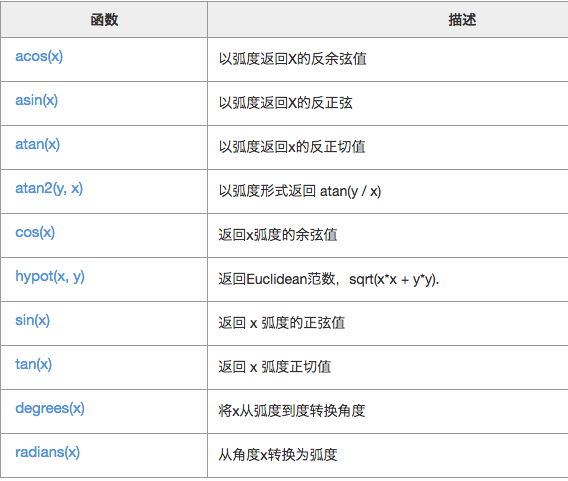
常量

字符串
字符串访问
要访问子字符串,用方括号以及索引或索引来获得子切片

字符串更新
字符串是常量,不能直接修改,但是可以通过字符串拼接,修改。
|
|
字符串特殊操作符

字符串格式化%
|
|

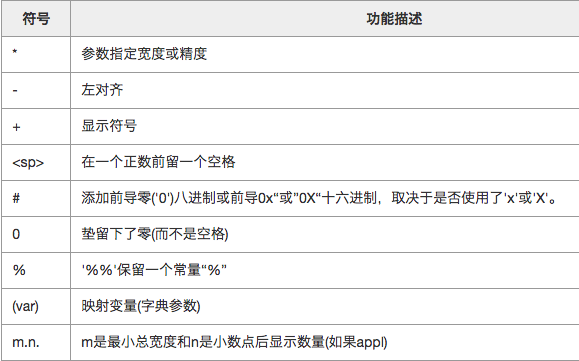
字符串内置函数
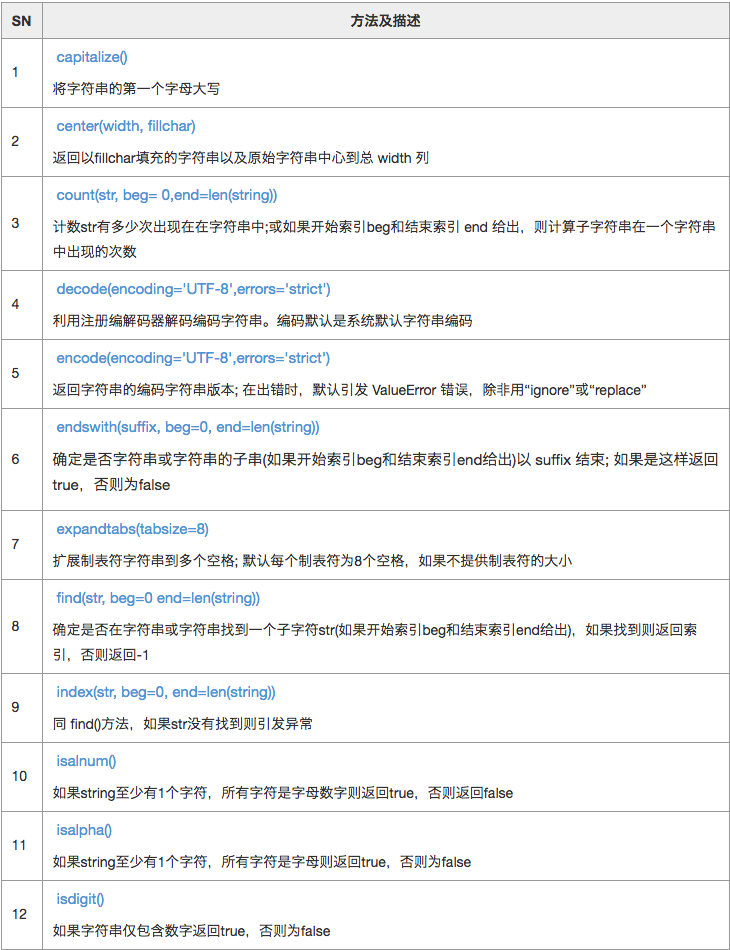
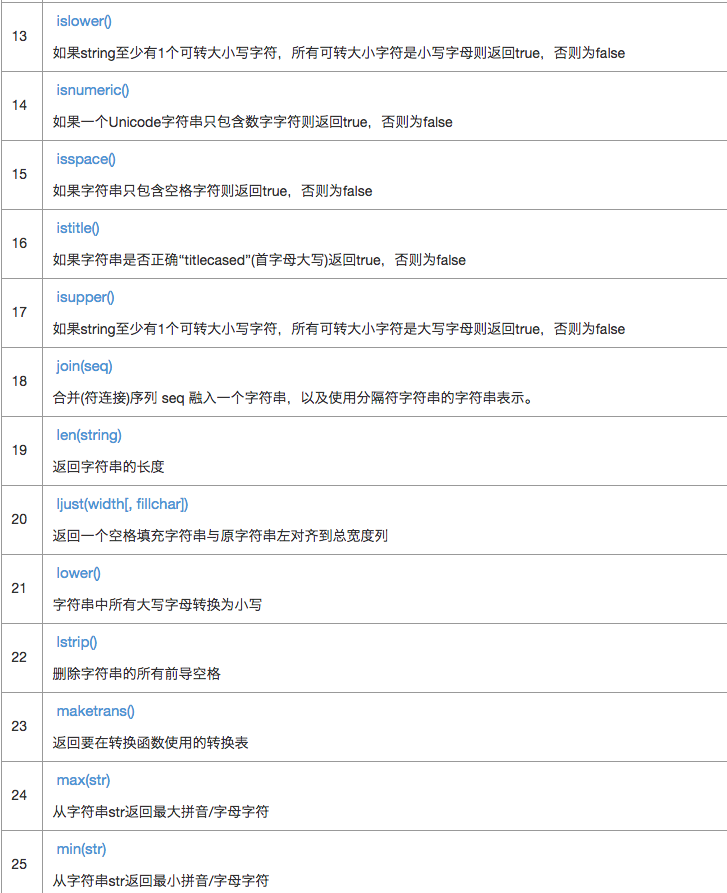


List(列表)
逗号分隔列表中元素,列表重要的一点是,在列表中的项目不必是同一类型。
|
|
与字符串索引类似,列表的索引从0开始,并列出可切片,联接,等等。
访问列表值
要访问列表值,请使用方括号连同索引或索引切片获得索引对应可用的值。例如 -
|
|
当执行上面的代码,它产生以下结果 -
|
|
列表值更新
可以通过给赋值运算符到左侧切片更新列表中的单个或多个元素, 并且可以使用 append()方法中加入一元素。例如 -
|
|
当执行上面的代码,它产生以下结果 -
|
|
删除列表值
|
|
|
|
列表基本操作

列表内置函数
| 函数名 | 功能描述 |
|---|---|
| cmp(list1, list2) | 列表元素比较,返回0,1,-1, |
| len(list) | 列表长度 |
| max(list) | 返回列表中最大值 |
| min(list) | 列表中最小值 |
| list(seq) | 转化为list |
| append(ele) | 元素添加到列表 |
| count(ele) | 统计元素在列表中出现次数 |
| extend(list) | 合并list |
| index(ele) | 返回列表中 ele 对象对应最低索引值 |
| insert(index, ele) | 插入 ele 对象到列表的 index 索引位置,index必须给出 |
| pop([index=-1]) | 根据index删除元素,默认删除最后一个 |
| remove(ele) | 删除ele元素 |
| reverse() | 列表翻转 |
| sort() | 列表元素排序 |
append()
|
|
extend()
|
|
count()
|
|
Tuple元组
元组是不可变的Python对象的序列,元组序列就像列表,元组和列表之间的区别是,元组不像列表那样不能被改变以及元组使用圆括号,而列表使用方括号,创建一个元组是将不同的逗号分隔值。
|
|
为了编写含有一个单一的值,必须包含逗号,即使只有一个值的元组 −
|
|
元素访问
要访问值元组,用方括号带索引或索引切片来获得可用的索引值
|
|
元素更新
元组是不可变的,这意味着我们不可以更新或更改元组元素的值。如下面的例子说明了可以把现有的元组创建新的元组的部分
|
|
元素删除
移除个元组的别元素是不可能的。如要明确删除整个元组,只需要用 del 语句。
|
|
基本操作
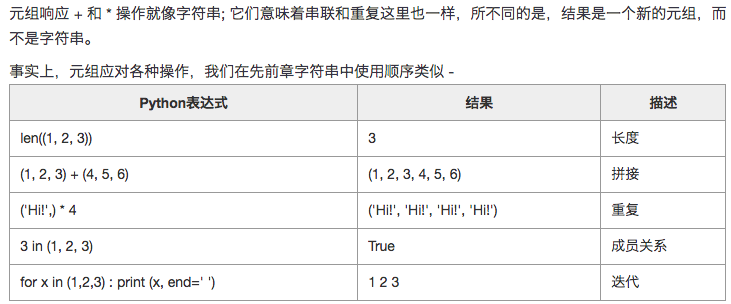

内置函数
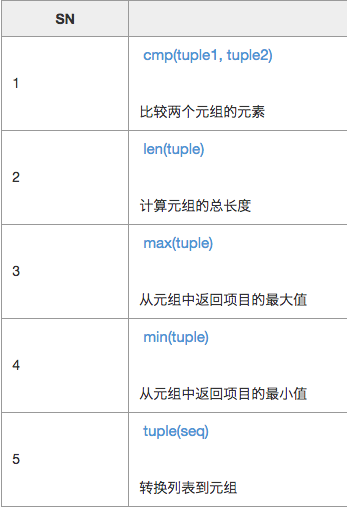
Python字典
每个键是从它的值由冒号(:),即在项目之间用逗号隔开,整个东西是包含在大括号中。没有任何项目一个空字典只写两个大括号,就像这样:{}.
键在一个字典中是唯一的,而值则可以重复。字典的值可以是任何类型,但键必须是不可变的数据的类型,例如:字符串,数字或元组这样的类型。
访问字典中的值
要访问字典元素,你可以使用方括号和对应键,以获得其对应的值。
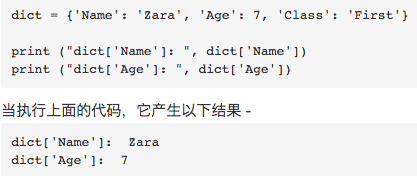
更新字典
可以通过添加新条目或键值对,修改现有条目,或删除现有条目
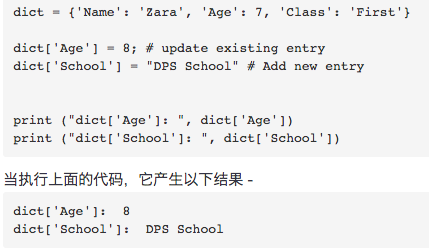
删除字典
可以删除单个字典元素或清除字典的全部内容。也可以在一个单一的操作删除整个词典。
要明确删除整个词典,只要用 del 语句就可以做到。

字典键
每个键对应多个条目是不允许的。这意味着重复键是不允许的。当键分配过程中遇到重复,以最后分配的为准。例如 -
123dict = {'Name': 'Zara', 'Age': 7, 'Name': 'Manni'}print ("dict['Name']: ", dict['Name'])## dict['Name']: Manni键必须是不可变的。这意味着可以使用字符串,数字或元组作为字典的键,但是像[‘key’]是不允许的。
内置函数

fromkeys()
使用seq的值作为键,来设置创建新的字典。
1dict.fromkeys(seq[, value]))参数
- seq — 这是将用于字典键准备值的列表。
- value — 这是可选的,如果提供的话则这个值将被设置为字典的值
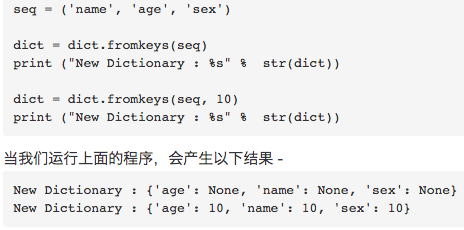
get()
返回给定键的值。如果键不可用,那么返回默认值 - None。
1dict.get(key, default=None)参数
- key — 这是在字典中被搜索的键。
- default — 这是以防键不存在对应值时,则使用这个值返回。
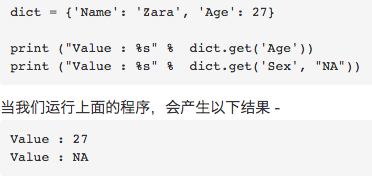
update()
添加字典dict2键值对到字典dict
